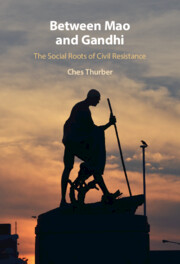Book contents
- Frontmatter
- Dedication
- Contents
- List of Figures
- List of Tables
- Acknowledgments
- 1 Pathways to Revolution
- 2 Social Ties and Civil Resistance
- 3 Nepal’s Gandhians Take Arms
- 4 Nepal’s Maoists Take to the Streets
- 5 Syria in the Arab Spring
- 6 Resisting Colonial Rule in the Syrian Mandate
- 7 Barriers to Civil Resistance: A Global Analysis
- 8 Gandhi Revisited: Overcoming Barriers to Civil Resistance in South Africa and India
- 9 Conclusion
- Appendix: Notes on Field Research in Nepal
- References
- Index
- Series page
6 - Resisting Colonial Rule in the Syrian Mandate
Published online by Cambridge University Press: 17 September 2021
- Frontmatter
- Dedication
- Contents
- List of Figures
- List of Tables
- Acknowledgments
- 1 Pathways to Revolution
- 2 Social Ties and Civil Resistance
- 3 Nepal’s Gandhians Take Arms
- 4 Nepal’s Maoists Take to the Streets
- 5 Syria in the Arab Spring
- 6 Resisting Colonial Rule in the Syrian Mandate
- 7 Barriers to Civil Resistance: A Global Analysis
- 8 Gandhi Revisited: Overcoming Barriers to Civil Resistance in South Africa and India
- 9 Conclusion
- Appendix: Notes on Field Research in Nepal
- References
- Index
- Series page
Summary
This chapter moves backward in time to the “mandate period,” when, in the aftermath of the first World War and the dissolution of the Ottoman Empire, the territory of Syria was placed under French colonial rule. The chapter begins with the Syrian Revolt of 1925-27. Launched by the “Patriotic Club,” a group made up of tribal leaders from the Druze religious sect in the mountainous Jabal Hawran region of South-Western Syria, this revolt shares many similarities with the early stages of Nepal’s Maoist uprising in that it was initiated amongst a relatively isolated ethnic community with few ties connecting them to the broader national population. The chapter then turns to an often overlooked case of mass civil resistance: the Syrian General Strike of 1936. The strike was led by an opposition political group called the “National Bloc,” whose leaders, while almost entirely older Sunnis from prominent families, stood at the top of extensive clientelistic networks that they were able to leverage to generate mass participation. The strike compelled the French administration to negotiate a treaty with the opposition leadership that set the groundwork for eventual independence.
- Type
- Chapter
- Information
- Between Mao and GandhiThe Social Roots of Civil Resistance, pp. 135 - 161Publisher: Cambridge University PressPrint publication year: 2021

